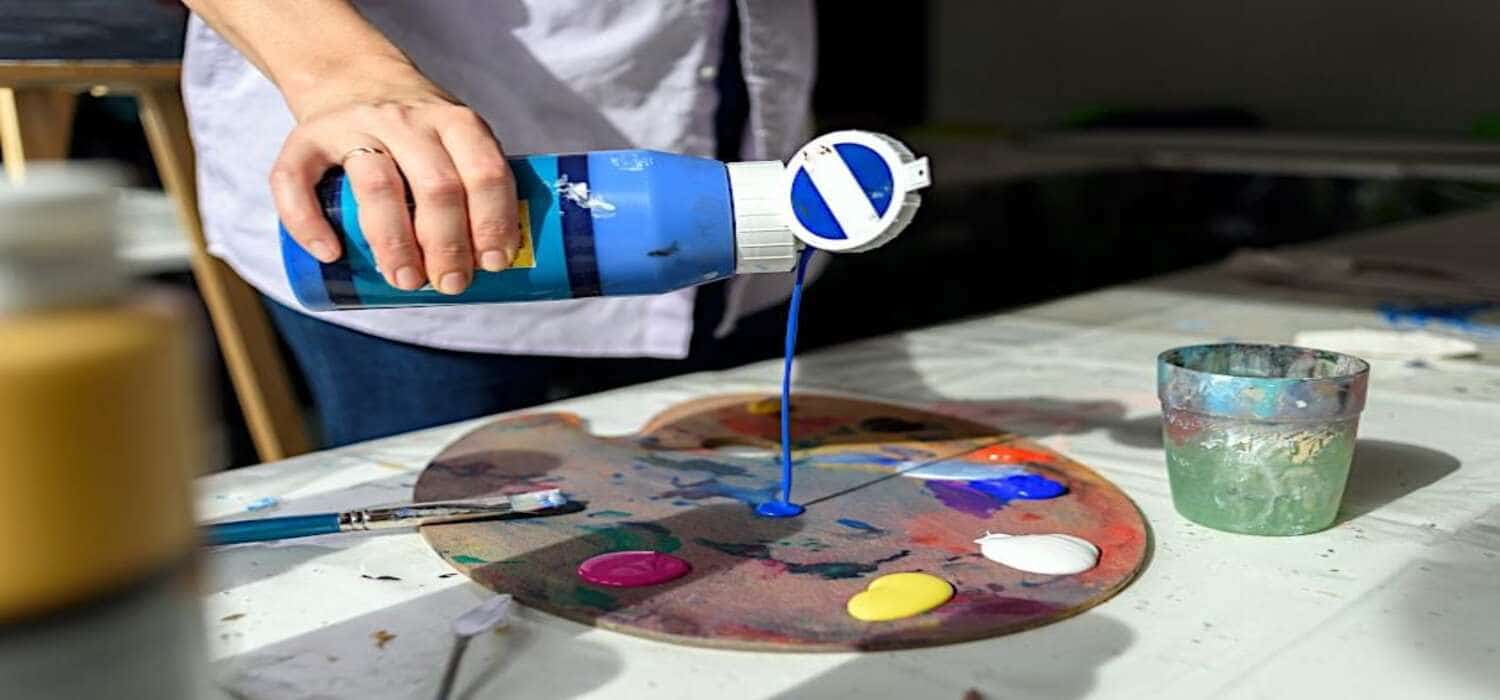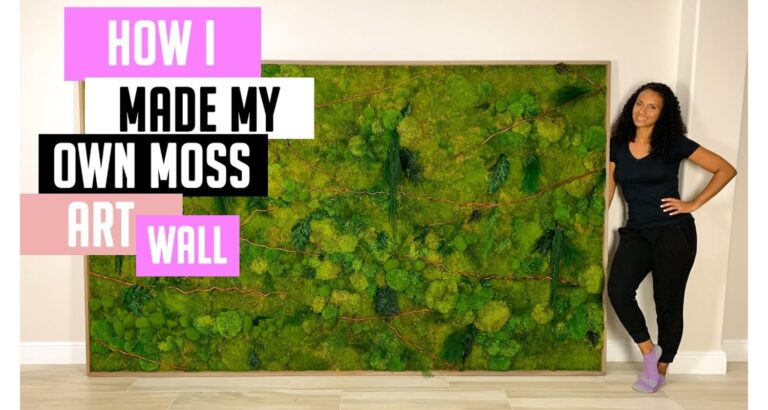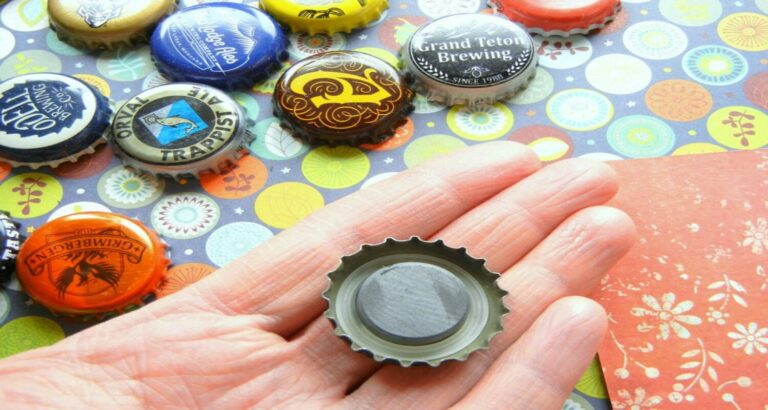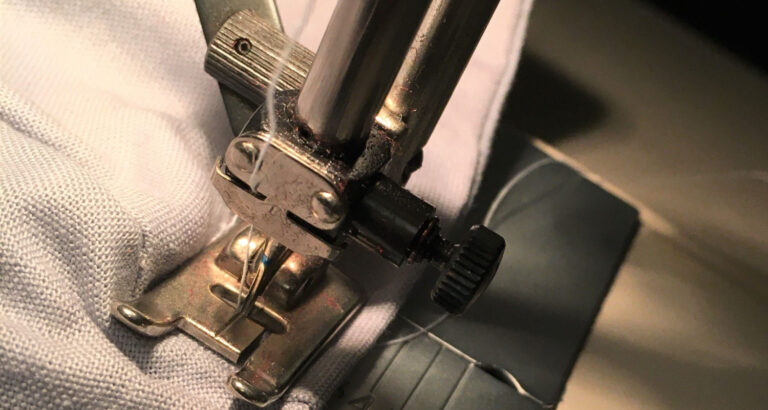Struggling with thick, unmanageable acrylic craft paint? You’re not alone. Many artists face the challenge of achieving the perfect consistency for their masterpieces. This guide unlocks the secret to effortlessly thinning acrylic paint, ensuring your projects turn out just as envisioned. Dive in to transform your painting experience and elevate your art. How to thin acrylic craft paint: mix a small amount of water or acrylic medium into the paint until you reach the desired consistency. Use up to 30% water for light thinning or acrylic mediums for maintaining vibrancy and adhesion.
Key Takeaways
- Understanding Your Paint: Knowing what makes up your acrylic paint is crucial for effective thinning.
- Water Works Wonders: A bit of water can go a long way in thinning your paint, but balance is key to avoid diluting the color too much.
- Mediums Maintain Quality: Acrylic mediums are your best bet for thinning paint without losing color intensity or adhesion.

- Test Before Applying: Always experiment on a small scale to find the perfect consistency before applying it to your main project.
- Preserve Your Art: Using the right thinning techniques ensures the longevity and vibrancy of your artwork.
- Safety First: Choose non-toxic thinning agents to keep your creative process healthy.
Thinning Acrylic Paint: Basics and Techniques
Crafting with acrylic paints is an art that allows for vast creativity and versatility. Whether you’re painting a canvas, crafting a masterpiece, or adding a touch of color to your DIY projects, the consistency of your paint plays a pivotal role in the outcome. However, acrylic paint straight from the tube may not always meet your needs. Thinning acrylic paint is a technique that can help achieve the desired consistency and flow, enhancing your painting process and final results. Here, we’ll dive into the basics of acrylic paint composition and various techniques for thinning it effectively.
Acrylic Paint Composition
Understanding what’s in your acrylic paint is the first step towards mastering its manipulation. Acrylic paint is primarily made up of color pigments, a binder (usually an acrylic polymer), and water. The binder holds the pigment in place once the paint dries, while water serves as the vehicle for the paint’s application. This unique composition allows acrylic paint to dry quickly and adhere to a wide range of surfaces but also makes it versatile enough to be thinned and manipulated for different effects.
Water as a Thinner
The simplest and most accessible way to thin acrylic paint is by adding water. Being the primary solvent in acrylic paints, water can effectively reduce viscosity without impacting the paint’s adhesion properties too drastically. However, it’s crucial to maintain a balance; adding too much water can break down the binder, leading to diminished color strength and paint adhesion. A general guideline is to add no more than 30-40% water to your paint to maintain its integrity.
Acrylic Mediums for Thinning
For those seeking to thin their paint without compromising color vibrancy or texture, acrylic mediums are the answer. These specially formulated products mix seamlessly with acrylic paint, reducing its viscosity while preserving or even enhancing the paint’s properties. From fluid mediums designed for smooth, brush-free applications to gels that maintain body but extend coverage, acrylic mediums offer a versatile range of effects. They’re particularly useful for techniques like glazing, where transparency is key without sacrificing the paint’s structural integrity.
Technique and Application
Thinning acrylic paint isn’t just about achieving the right consistency; it’s also about applying it correctly. Whether using water or mediums, start by mixing small amounts and gradually adjust to achieve your desired effect. Testing on a scrap piece before applying to your project can help you avoid unwanted surprises. Remember, different surfaces and projects may require different levels of thinning, so consider the end use of your paint as you mix.
By mastering these techniques, you can transform the way you use acrylic paint, unlocking new possibilities in your art and craft projects. Whether aiming for delicate washes, detailed lines, or anything in between, understanding and applying these thinning methods will elevate your creative work.
Practical Guide to Thinning Acrylic Paint
Thinning acrylic paint effectively enhances its versatility, allowing for a broader range of techniques and applications. This practical guide will walk you through the steps to achieve the perfect consistency for your projects, ensuring your artwork stands out with the desired finish and texture.
Choose Your Thinning Agent
Decide between water and acrylic mediums based on your project’s needs. Water is ideal for a light thinning, maintaining a paint’s ease of application without affecting its color too much. Acrylic mediums, however, offer a way to thin paint while enhancing its properties, such as gloss, matte finish, or transparency, without compromising the paint’s structure or adhesion.
Mixing the Paint
Begin with a small amount of paint on your palette. If using water, a good starting point is adding water in increments of 10%, not exceeding a 1:3 ratio of water to paint. For mediums, follow the manufacturer’s instructions, as the ratio can vary depending on the desired effect and the medium’s consistency.
Testing Consistency
Before applying to your main project, test the thinned paint on a similar surface to see the effect. This step is crucial for adjusting the paint to the perfect consistency and avoiding wasting materials on unsuccessful attempts.
Application
Once satisfied with the consistency, apply the thinned paint to your project. Keep in mind that thinner paint may require multiple layers to achieve the same opacity as unthinned paint, especially if you’re working on a porous surface or aiming for a more translucent effect.
Adjustments and Layering
As you work, you may need to adjust the paint’s consistency further. Remember, it’s easier to add more thinner than to thicken the paint again. Allow each layer to dry completely before applying the next to prevent unwanted textures or blending.
By following these steps, you can master the art of thinning acrylic paint, opening up new possibilities in your artistic endeavors. Whether aiming for delicate washes, detailed work, or layering colors, the key to success lies in understanding how to manipulate the paint’s consistency to suit your vision.
Advanced Techniques and Tips
As you grow more comfortable with basic thinning techniques, exploring advanced methods can elevate your acrylic painting skills further. These sophisticated tips not only enhance the texture and fluidity of your paint but also introduce unique effects and finishes to your artwork. Let’s dive into some advanced techniques and tips for thinning acrylic craft paint.
Layering and Glazing
Thinning acrylic paint is particularly effective for creating translucent layers, a technique known as glazing. This method involves applying thin, transparent layers of paint over one another to achieve depth and luminosity. Using a glazing liquid or a medium designed for thinning can control the transparency level without diluting the paint’s strength. The key is patience and precision, allowing each layer to dry completely before applying the next, building complexity and richness in color.
Textured Effects
For artists seeking to add texture to their work, thinning paint can be a gateway to experimentation. Mixing paint with a gel medium, rather than water, can maintain the body of the paint while still altering its consistency for application. This approach allows the paint to hold peaks and brush strokes, ideal for impasto techniques or adding dimensional elements to your piece. The trick is to find the right balance between medium and paint to achieve the desired thickness without compromising the paint’s stability.
Pouring Techniques
Acrylic pouring has surged in popularity, thanks in part to the fascinating patterns and effects that can be achieved. This technique requires a much thinner consistency, which is typically achieved by using a pouring medium. These mediums are designed to increase the flow of the paint without separating the pigment and binder. Mixing paints with a pouring medium and sometimes a small amount of water can create a fluid, pourable mixture. Experimenting with different ratios and pouring techniques, such as swirls, layers, and ‘dirty pours,’ can result in stunning, abstract designs.
Airbrushing
Thinning acrylic paint for airbrushing opens up a world of smooth, even application not achievable with brushes. Special airbrush mediums are available that thin the paint to the perfect consistency for airbrush use, ensuring it flows smoothly through the gun without clogging. The key is to test the paint’s consistency before use, aiming for a milk-like texture that sprays evenly.
Preservation and Longevity
Advanced thinning techniques should always consider the longevity of the artwork. Using archival-quality thinning mediums and additives can ensure that your work remains vibrant and intact over time. Avoid over-thinning with water, which can weaken the paint film, and instead opt for mediums that enhance durability and UV resistance.
Embracing these advanced techniques and tips not only expands your creative repertoire but also deepens your understanding of the materials you work with. Experimentation is crucial; each project offers a new opportunity to refine your skills and push the boundaries of acrylic painting.
Precautions and Best Practices
When thinning acrylic craft paint, achieving the right consistency is essential for the success of your project. However, it’s equally important to proceed with caution to ensure the quality and longevity of your artwork. Here are some key precautions and best practices to keep in mind:
Avoid Over-Thinning
Adding too much water or medium can break down the paint’s binder, leading to a loss of color intensity and adhesion. Stick to the recommended ratios, typically no more than 30-40% water to paint for thinning purposes. Over-thinned paint may also become too transparent and fail to cover the painting surface effectively.
Quality of Water Matters
If you’re using water to thin your paint, consider the water quality. Tap water can contain minerals and chemicals that might affect the paint’s color or longevity. Using distilled water can prevent these potential issues, ensuring the paint remains pure and unaffected.
Use the Right Medium for the Job
Acrylic mediums are designed for specific purposes, such as increasing flow, enhancing gloss, or extending drying time. Select a medium that aligns with your desired outcome. For instance, a pouring medium is ideal for fluid art techniques, while a glazing medium suits transparency and layering.
Test Before Applying
Always mix and test your thinned paint on a scrap piece of material similar to your project surface. This step helps you adjust the paint’s consistency before applying it to your final piece, reducing the risk of errors and wasted materials.
Protect Your Work Surface
Thinning paint can increase the likelihood of drips and splatters. Cover your work area with a protective sheet or newspaper to make cleanup easier and protect the surface from accidental spills.
Preserve Your Paints
Once you’ve thinned your paint, it’s best used immediately. If you need to store thinned paint, seal it in an airtight container and keep it in a cool, dark place to prolong its usability. Be mindful that stored thinned paint might still degrade faster than unthinned paint.
Following these precautions and best practices will help ensure your thinned acrylic craft paint maintains its desired qualities and your artwork stands the test of time. Always approach thinning with a mindset of experimentation and learning to find what works best for your artistic vision.
Conclusion
Mastering thinning acrylic craft paint is a game-changer. It expands versatility and creative possibilities. Achieve delicate washes, bold textures, and intricate details. Manipulating paint consistency is key. Understand paint composition and advanced thinning techniques. Experiment and be patient. Elevate your work with these insights. Capture your creative intent and stand the test of time. The journey through acrylic paint’s fluid dynamics is endless discovery.
FAQ’S
What is the best way to thin acrylic paint for a smooth application?
To achieve a smooth application, mix acrylic paint with a small amount of distilled water or an acrylic medium. This maintains the paint's vibrancy and adhesion, ideal for various painting techniques.
Can I use tap water to thin my acrylic paints?
While tap water can be used, distilled water is preferred to avoid introducing impurities and minerals that could affect the paint's consistency and color.
How do I prevent my thinned acrylic paint from cracking?
Avoid over-thinning by using no more than a 30-40% water to paint ratio. Employ acrylic mediums to maintain the paint's elasticity and prevent cracking.
What's the difference between thinning acrylic paint with water vs. mediums?
Water thins paint but may reduce color intensity and durability. Mediums thin paint while enhancing its properties, such as transparency, texture, and finish, without compromising quality.
Can thinned acrylic paint be used for techniques like glazing and washing?
Absolutely! Thinned acrylic paint is perfect for glazing and washing, offering translucent layers and soft color gradients. Use a glazing medium for optimal results and controlled transparency.

I am Sammy and I blog at Live it. Love it. Make it. It is creative lifestyle blog run by best friends H and Sammy. Head over and follow our crafty adventures!






